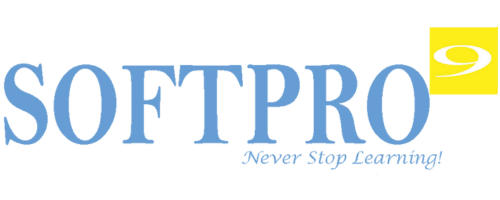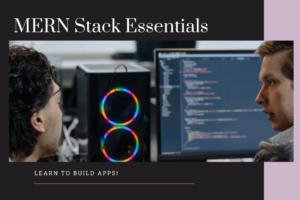
What is MERN Stack and What is it used for?
#1 Myinstitutes.com is one of the Best Educational Portal and Training Institutes in MYSORE, MANGALORE, and BANGALORE.
In today’s fast-evolving tech landscape, developers need efficient and streamlined solutions to build modern web applications quickly and effectively. The MERN Stack has emerged as one of the most popular and robust solutions for full-stack JavaScript development. MERN stands for MongoDB, Express.js, React, and Node.js—four powerful technologies that provide an end-to-end framework for building dynamic, database-driven web applications.
Let’s break down what each component of the MERN stack does and explore its key uses in web development.
Understanding the Components of the MERN Stack
1. MongoDB: The NoSQL Database
MongoDB is an open-source, NoSQL database that stores data in a flexible, JSON-like format called BSON (Binary JSON). Unlike traditional relational databases that rely on rigid schemas, MongoDB allows for flexible, document-based storage. This means that as your application evolves, you can add, remove, or modify fields in your data models without needing to overhaul your database structure.
- Why MongoDB?
- It’s scalable and can handle massive amounts of unstructured or semi-structured data.
- Its flexibility makes it easier to iterate and develop applications that deal with dynamic datasets, such as user-generated content, logs, or real-time data.
- The use of BSON allows for seamless integration with JavaScript frameworks, reducing the friction between the backend and frontend.
2. Express.js: The Backend Framework
Express.js is a minimal and flexible Node.js web application framework that simplifies the process of building server-side applications. It provides a range of features for building APIs and handling HTTP requests and responses, which allows developers to build robust web applications and services.
- Why Express.js?
- It simplifies routing, which defines how your application responds to client requests.
- Express allows middleware integration, which is essential for processing requests and responses, handling cookies, authentication, logging, and more.
- It’s designed for high performance and can handle complex back-end logic while maintaining a lightweight codebase.
3. React: The Frontend Library
React, developed by Facebook, is a JavaScript library used for building user interfaces, especially single-page applications (SPAs). It focuses on creating a dynamic and interactive UI by rendering components that can efficiently manage an application’s state. React allows developers to build reusable components, making it easier to maintain and scale applications.
- Why React?
- Component-based architecture: React’s component-based structure allows developers to break down the user interface into smaller, reusable elements, simplifying both the development and the testing process.
- Virtual DOM: React uses a Virtual DOM, which optimizes rendering performance by only updating parts of the page that have changed, making it ideal for building highly responsive interfaces.
- State management: React efficiently manages the application’s state, ensuring that changes in data or UI elements are reflected in real-time without the need for page reloads.
4. Node.js: The JavaScript Runtime
Node.js is a server-side JavaScript runtime built on Chrome’s V8 JavaScript engine. It allows developers to run JavaScript on the server, outside of the browser. This makes it possible to build the backend (server-side) of web applications using the same programming language used on the frontend.
- Why Node.js?
- Asynchronous, non-blocking architecture: Node.js can handle multiple operations simultaneously, which means it’s highly scalable and efficient, making it ideal for real-time applications.
- Single language across the stack: Since JavaScript is used on both the frontend and backend, developers can streamline their development process, reducing context switching between different programming languages.
- Large ecosystem: Node.js has a vast ecosystem of libraries and modules available through npm (Node Package Manager), making it easy to integrate third-party services and functionalities.
How the MERN Stack Works Together
One of the key strengths of the MERN Stack is how seamlessly these technologies integrate with each other, creating a cohesive and smooth development experience:
- React handles the user interface (UI) and interacts with the backend by making HTTP requests to the server built with Express.js.
- The server processes these requests, performs any necessary backend logic, and interacts with the MongoDB database to store or retrieve data.
- Node.js serves as the runtime environment for the entire application, executing the JavaScript code on the server and handling I/O operations, including communication between the server, database, and client.
This cohesive integration of technologies makes the MERN stack incredibly powerful for building modern, single-page applications and web apps that require dynamic data handling, fast performance, and real-time interactions.
What is the MERN Stack Used For?
The MERN stack is versatile and can be used to build a wide range of applications, from small projects to complex enterprise-level applications. Some of the most common use cases include:
1. Single-Page Applications (SPAs)
React’s ability to build highly dynamic and responsive user interfaces makes MERN ideal for creating single-page applications. SPAs offer a smooth, fast, and app-like experience by loading the entire application on the initial page load and updating only the parts that change.
Examples include dashboards, social media feeds, and any application where performance and real-time updates are crucial.
2. Real-Time Applications
Thanks to the non-blocking, asynchronous architecture of Node.js, the MERN stack is well-suited for building real-time applications such as chat platforms, collaborative tools, or live streaming services. The ability to handle many simultaneous users and events makes it a go-to choice for real-time features.
3. E-Commerce Platforms
E-commerce platforms benefit from the speed, scalability, and flexibility of the MERN stack. Applications that need to handle large volumes of data (like product catalogs), real-time updates (inventory management), and secure payment processing can all be built efficiently using the MERN stack.
4. Content Management Systems (CMS)
A MERN-based content management system allows for dynamic content creation and modification, with MongoDB managing the storage of content and media, and React providing a smooth and responsive frontend for managing data. The flexibility of this stack allows for custom-tailored CMS solutions for blogs, news sites, and business websites.
5. Enterprise-Level Applications
The scalability and performance of the MERN stack make it an excellent choice for building enterprise applications that require security, speed, and the ability to handle large-scale data. Large-scale platforms for finance, healthcare, logistics, and customer management can be efficiently built with MERN.
Advantages of MERN Stack
1. End-to-End JavaScript
One of the biggest advantages of MERN is the use of JavaScript across the entire development process. This eliminates the need to learn multiple programming languages for frontend, backend, and database management, which streamlines development and reduces the complexity of the project.
2. Scalability and Flexibility
All components of the MERN stack are designed with scalability in mind. MongoDB allows for horizontal scaling, while Node.js and Express.js can handle a large number of concurrent users and requests. React’s component-based architecture also makes it easier to scale applications by reusing components.
3. Open Source and Rich Ecosystem
Each technology in the MERN stack is open-source and benefits from an extensive ecosystem of tools, libraries, and community support. This provides developers with access to a wide range of resources to speed up development and solve problems efficiently.
4. Strong Community Support
Given the popularity of the MERN stack, there is a vast amount of community support, including tutorials, forums, and libraries that make it easier to resolve issues and implement best practices.
Conclusion
The MERN Stack is a powerful, flexible, and efficient solution for full-stack JavaScript development. Whether you’re building small-scale applications or enterprise-grade platforms, the stack’s use of MongoDB, Express.js, React, and Node.js ensures that developers have the tools they need to build fast, scalable, and dynamic web applications. By leveraging the synergy between these technologies, the MERN stack enables developers to work seamlessly across the entire development lifecycle while keeping the codebase unified in JavaScript, making it one of the most sought-after stacks in the modern web development ecosystem.



